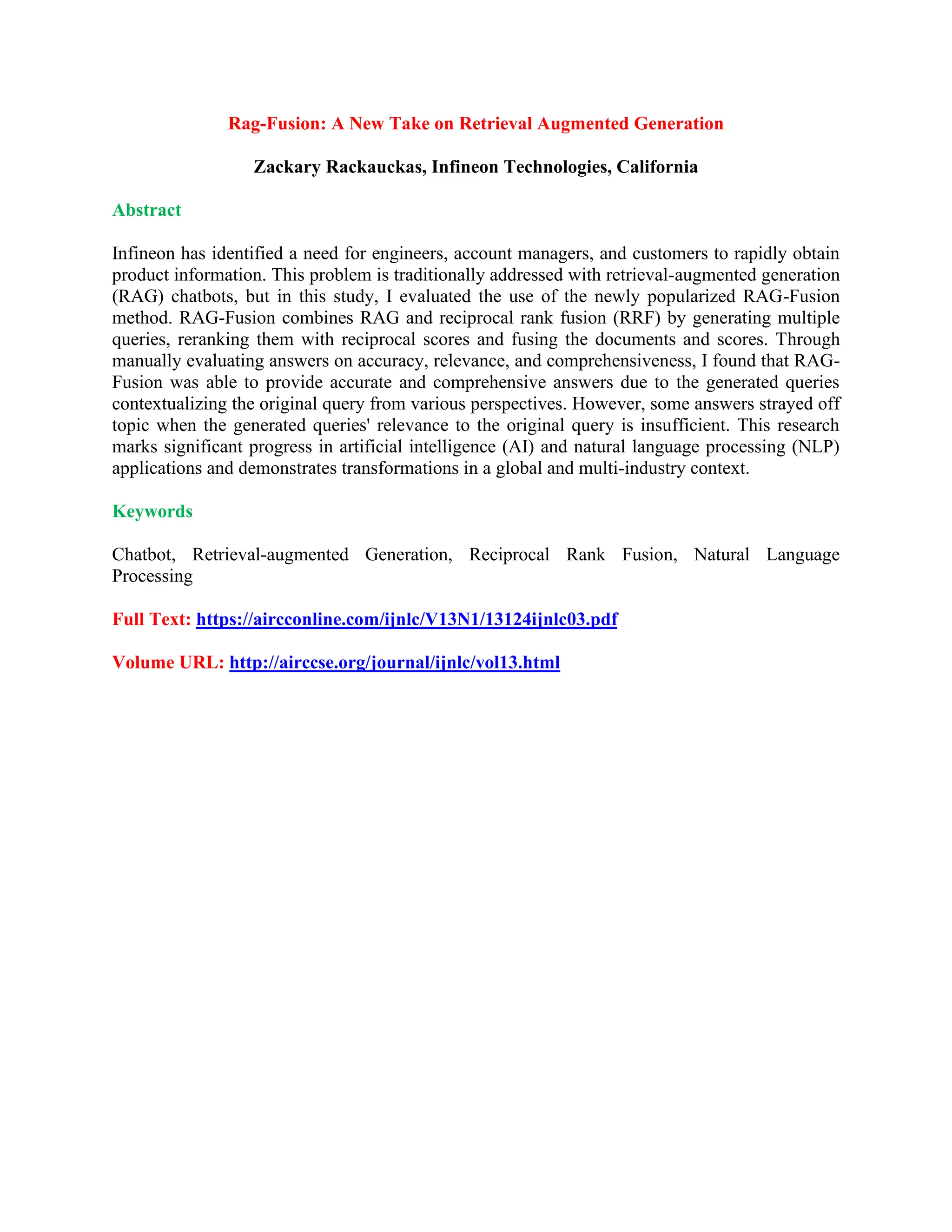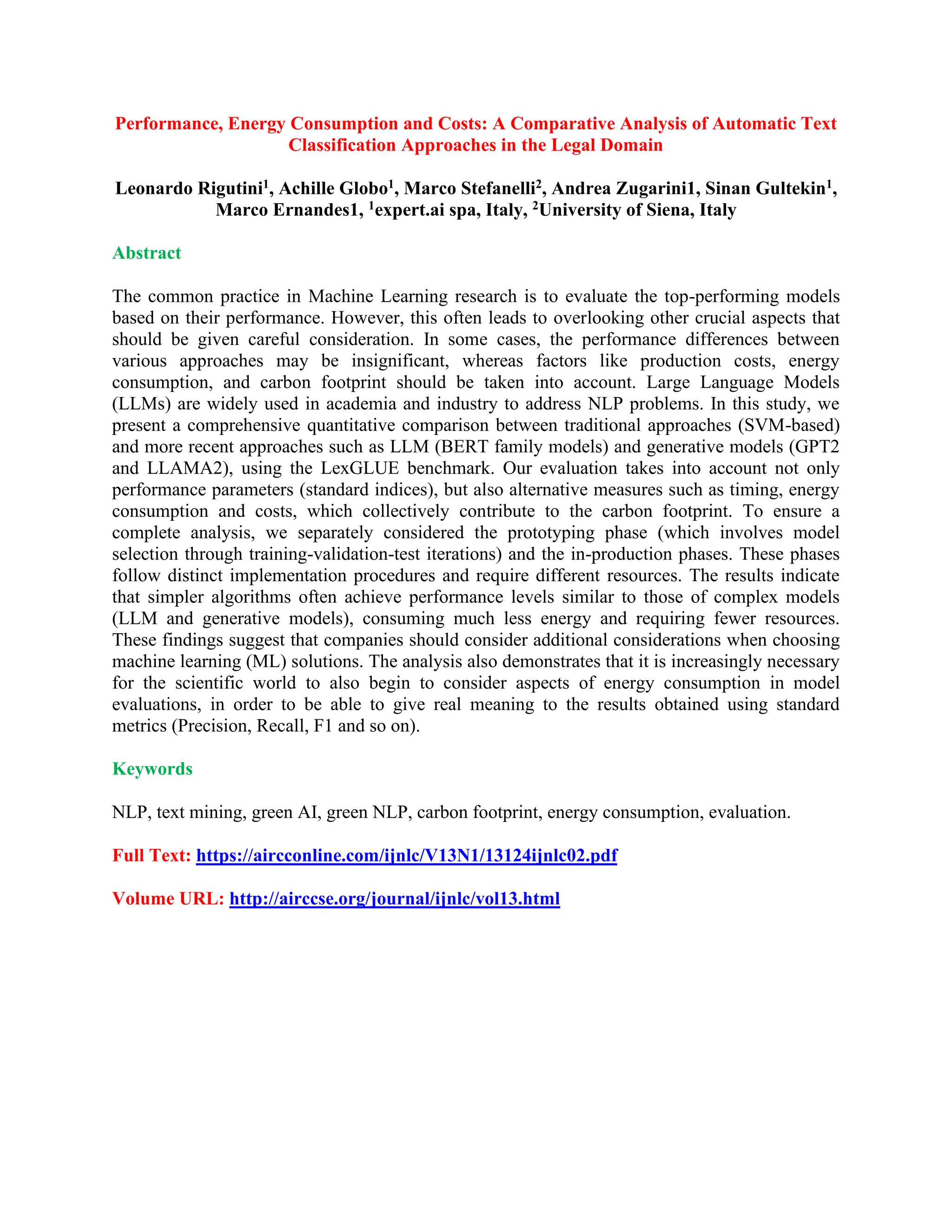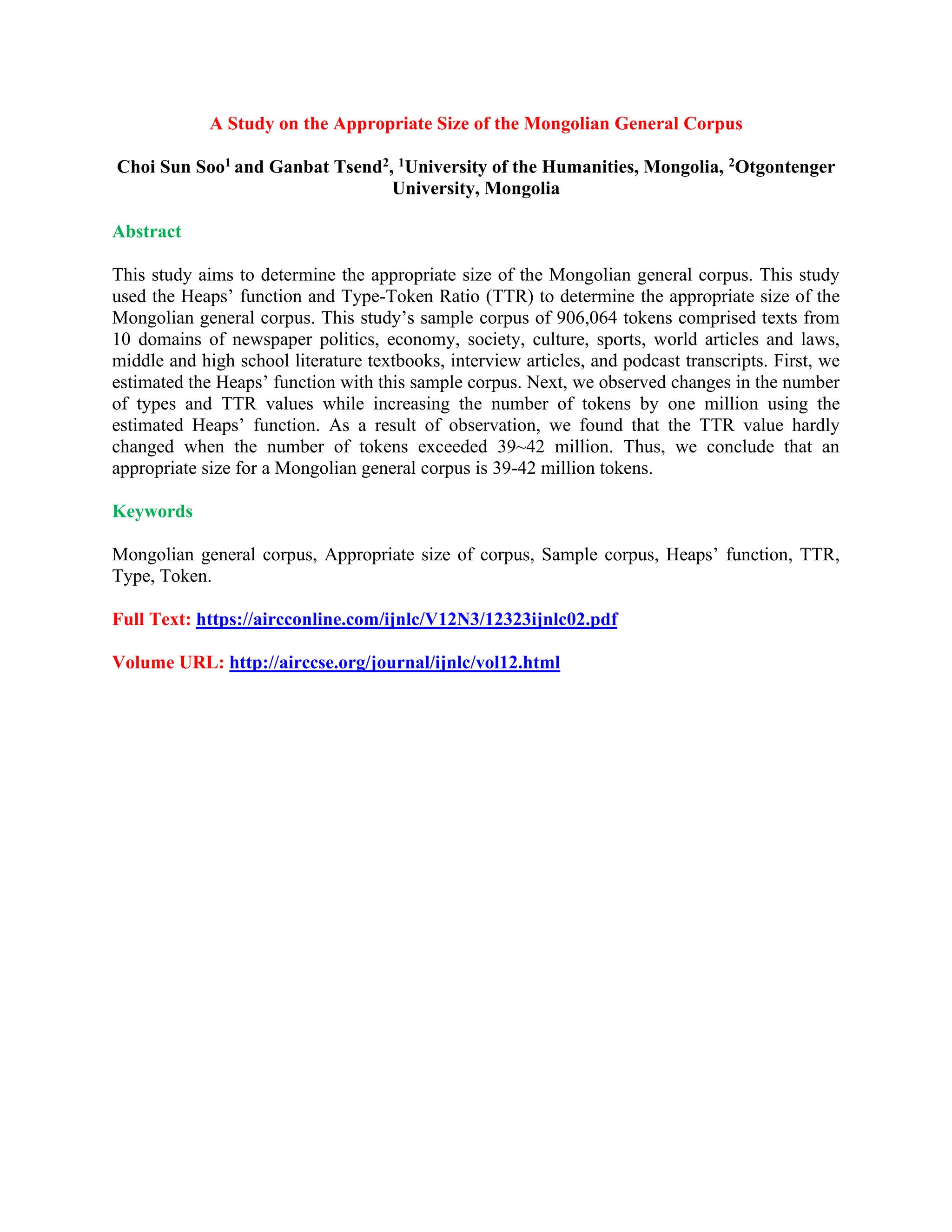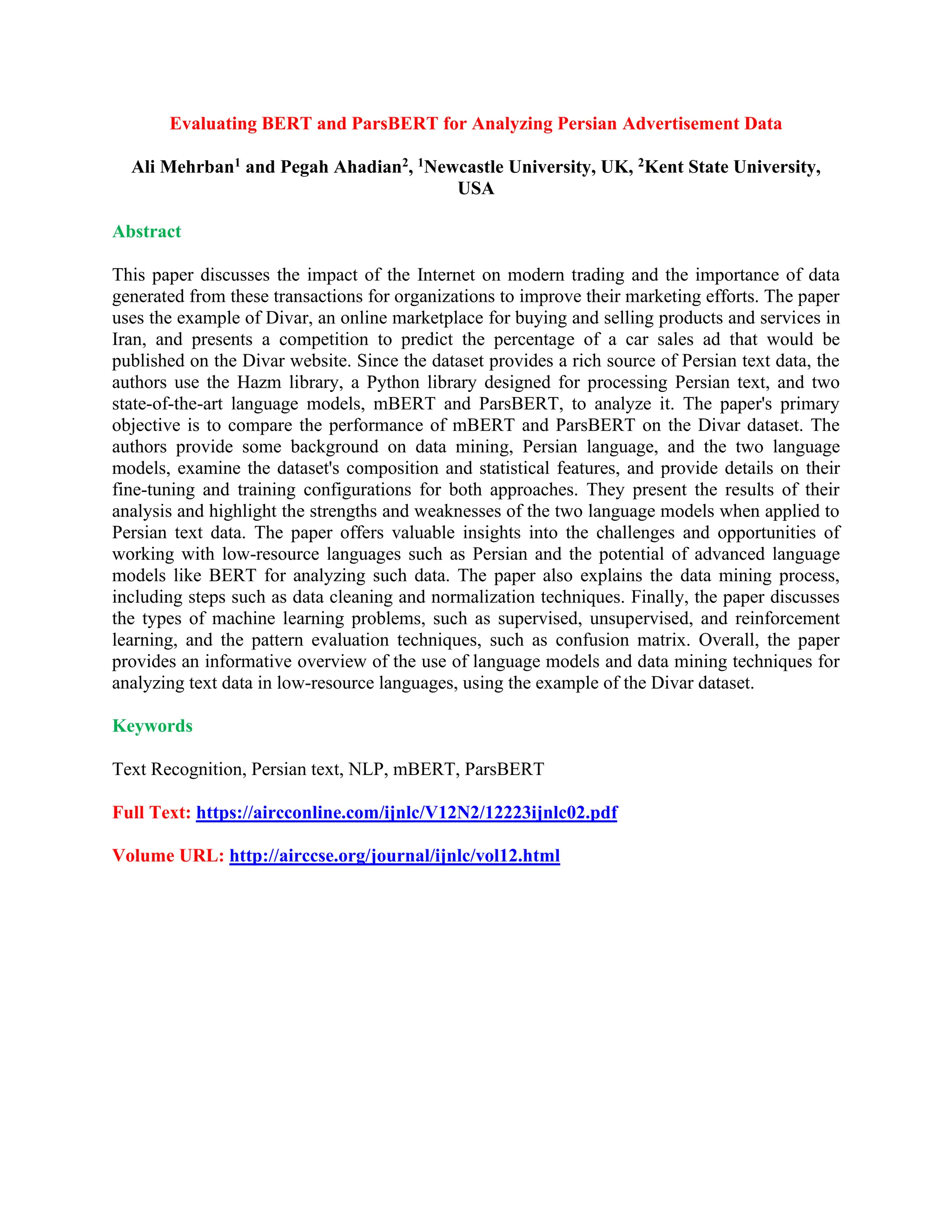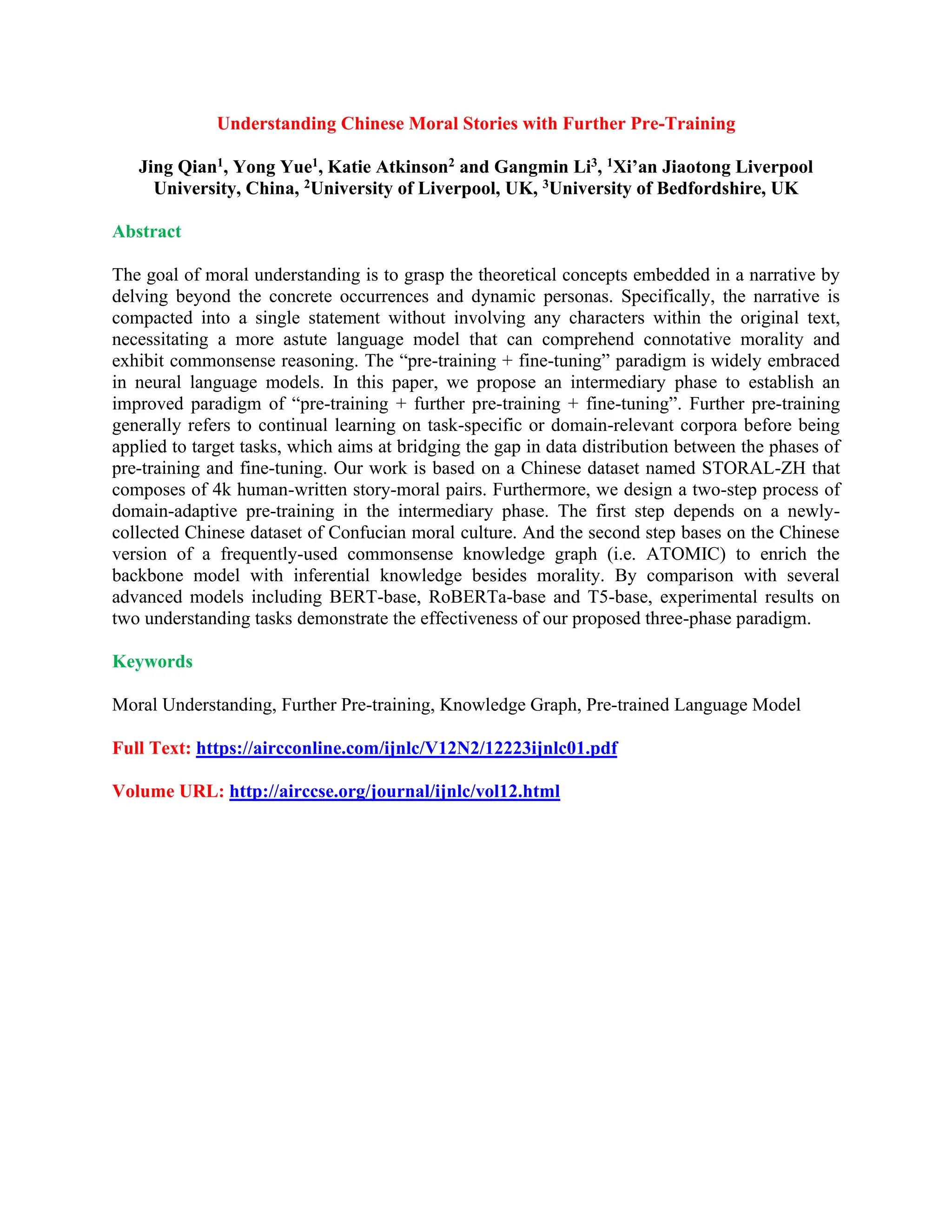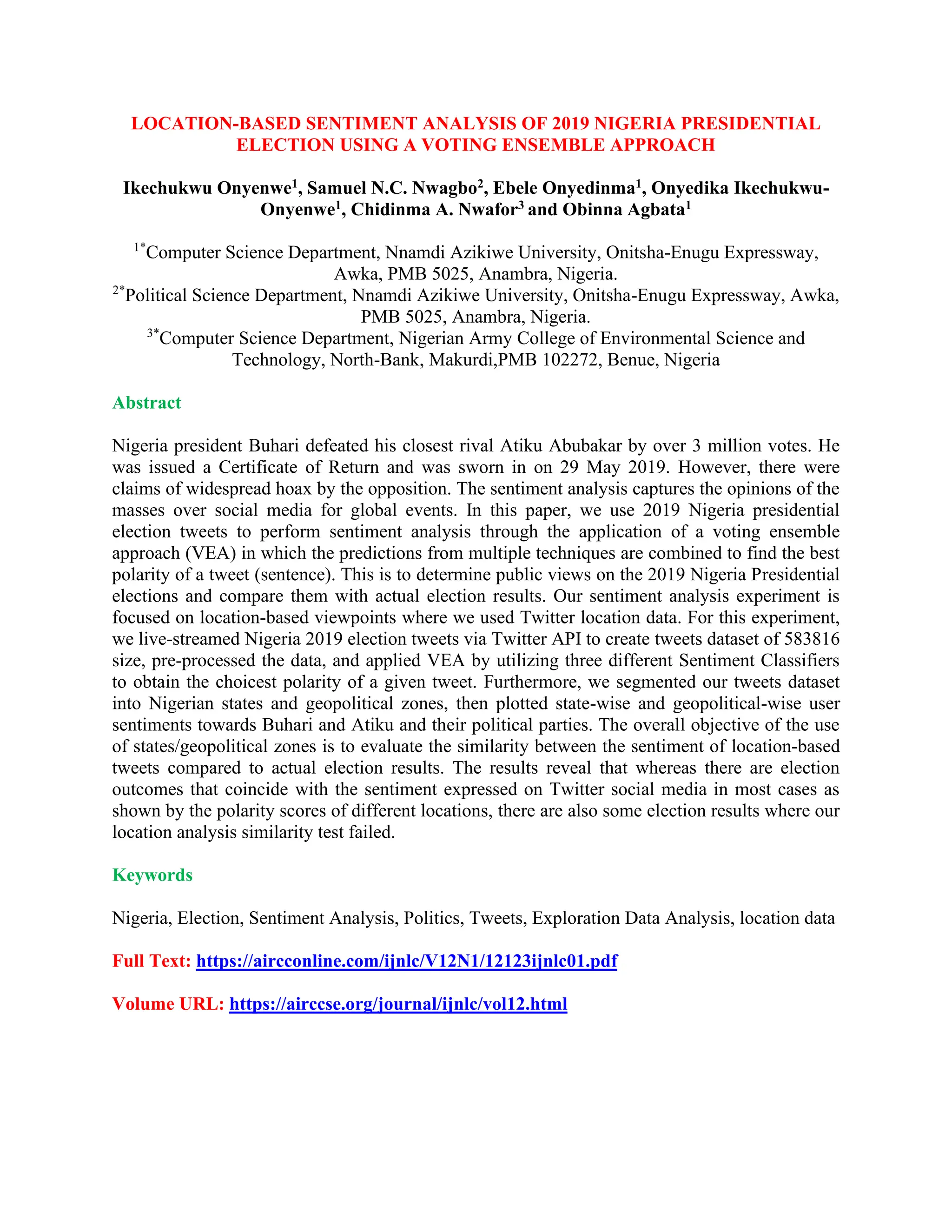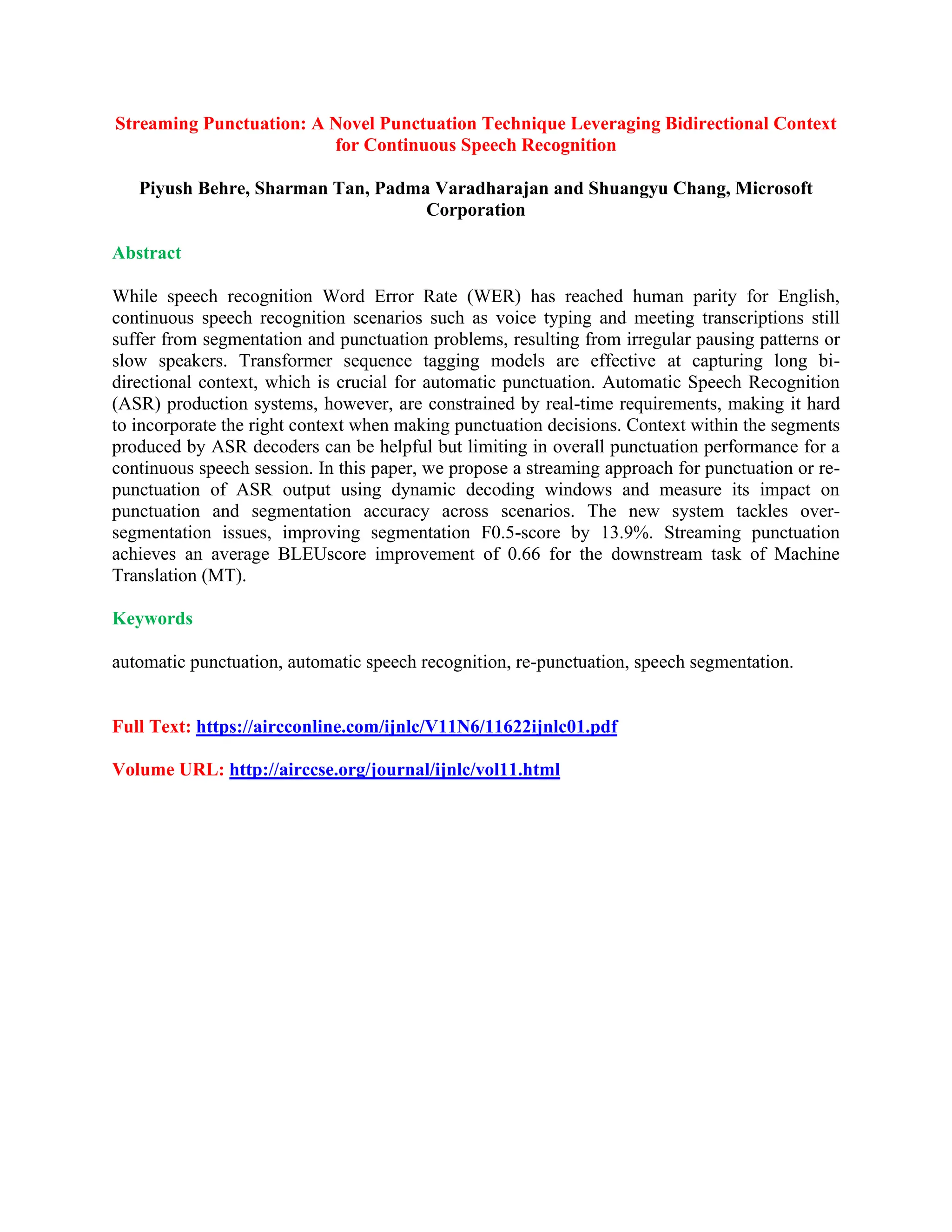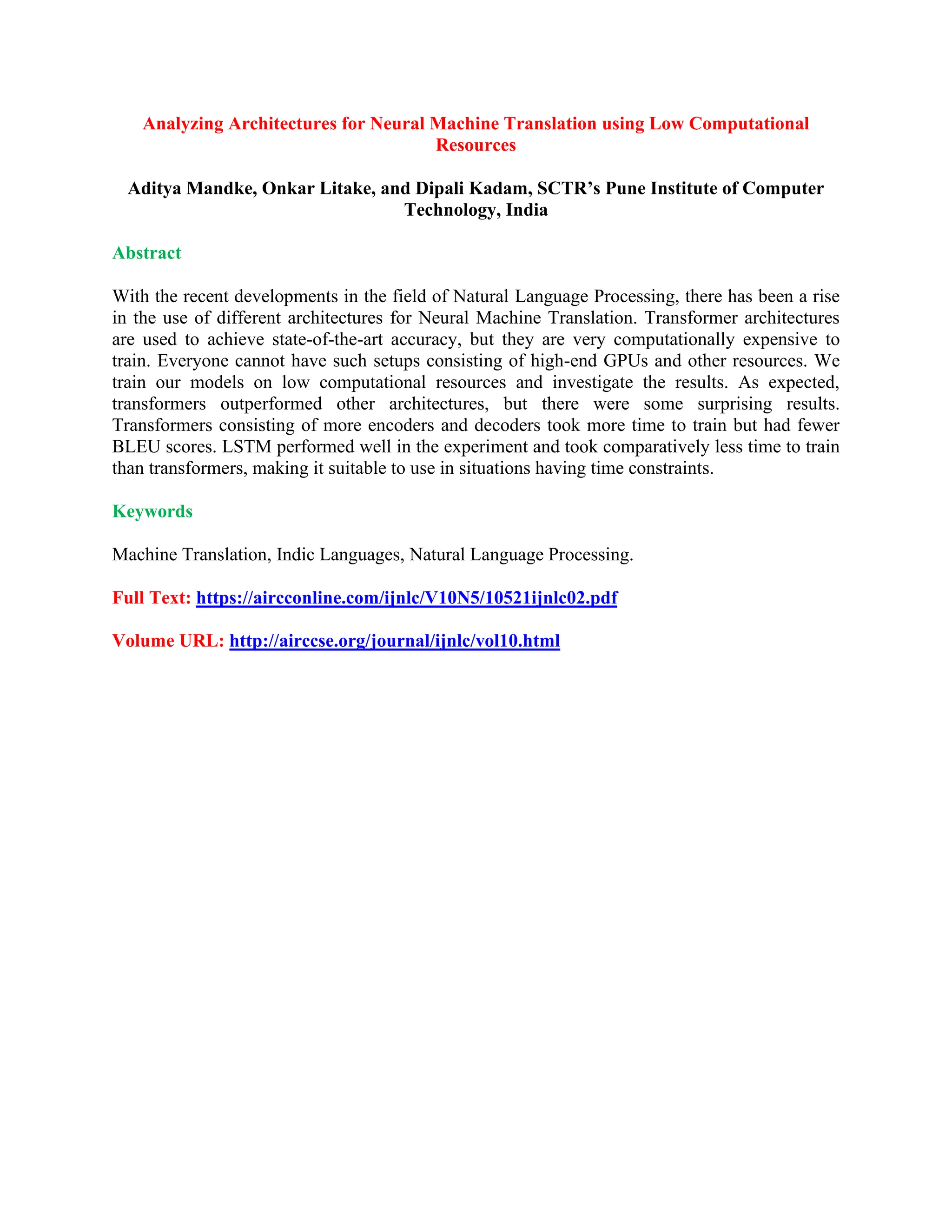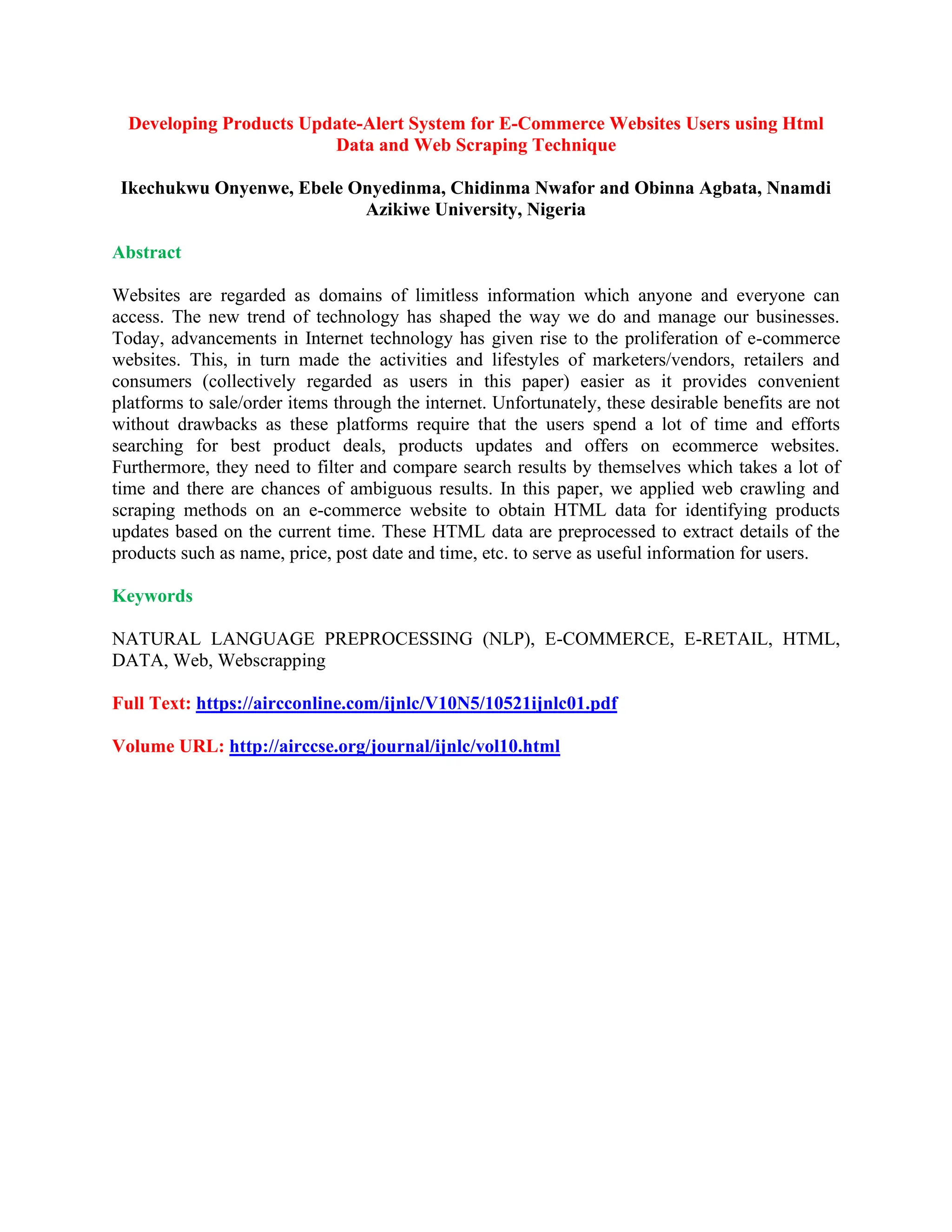The document features a collection of top-cited articles from the International Journal on Natural Language Computing, covering diverse topics such as retrieval-augmented generation, automatic text classification in the legal domain, and sentiment analysis of the 2019 Nigeria presidential election. Each article presents innovative research findings and methodologies related to natural language processing, including advancements in AI applications, model comparisons, and transliteration frameworks. The studies contribute significantly to the understanding and development of language technologies across various contexts and languages.
![May 2024: Top10 Cited Articles in Natural
Language Computing
International Journal on Natural Language
Computing (IJNLC)
https://airccse.org/journal/ijnlc/index.html
ISSN: 2278 - 1307 [Online]; 2319 - 4111 [Print]
Google Scholar
https://scholar.google.com/citations?user=A5tqIdoAAAAJ&hl=en](https://image.slidesharecdn.com/may2024-top10citedarticlesinijnlc-240522114859-ee10d333/75/May-2024-Top10-Cited-Articles-in-Natural-Language-Computing-1-2048.jpg)
